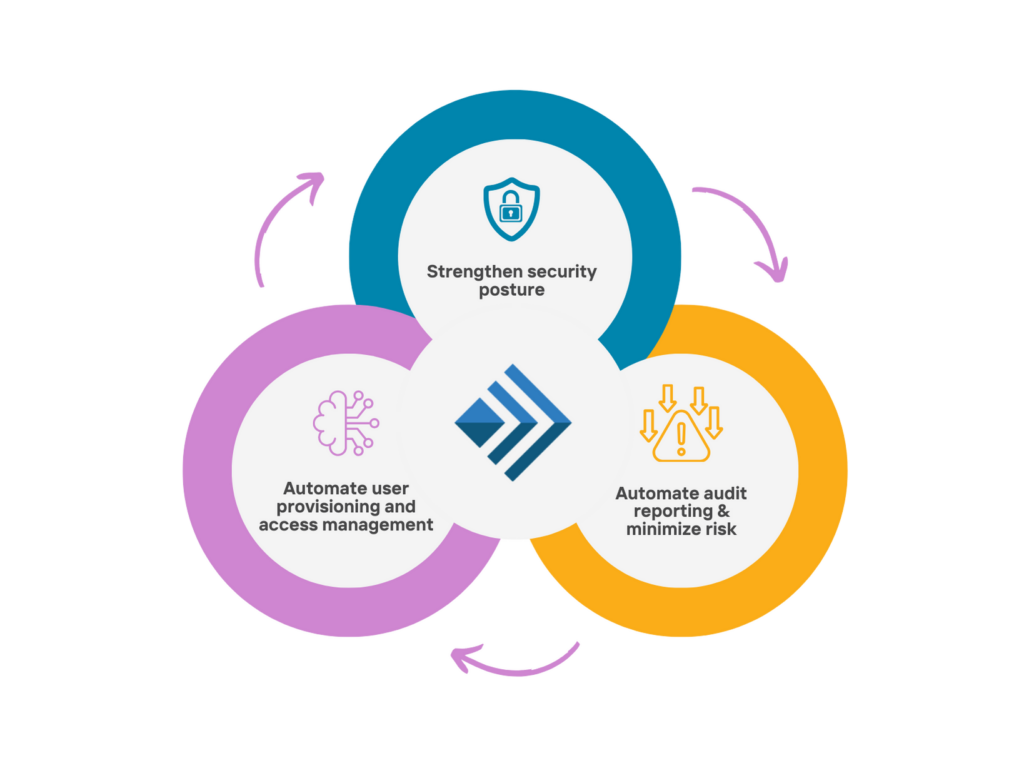
Creating your ideal IAM program is never simple, but it can be simplified. With decades of collective insights from some of the best performing experts in the field, CEs should have no shortage of roadmaps to the perfect program. Yet often ignorance overshadows intelligence and leads to easily avoidable mistakes that any identity expert can spot. Ideal IAM programs start with expertise. A few basic pointers could be all that stands between a gainful identity investment and a costly comedy of errors where no one is laughing.
Simeio’s teams have instituted some of the most successful and ideal IAM programs in the history of the field. These are the 5 key points forming the cornerstones of the ideal IAM program you hope to achieve.
#1 Partner with Identity Experts you can Trust
An ideal IAM program requires an ideal IAM partner. Unless your enterprise is in the business of identity services and solutions, you need outside assistance with your digital transformation. Vikram Subramanian, Simeio’s Vice President, advises: “Find a partner you can trust to advise you on the evolving landscape for planning, implementation, and operations”. Adopt the mindset of hiring a candidate for a team. Look for experience, adaptability, talent pool, focus, and financial stability.
Maintaining project momentum and scoring quick wins largely determines the success of an IAM rollout; a trusted and competent partner enables this. A single internal operator (usually a CISO) doesn’t cut it. You need a proven and certified service team, attuned to the best practices of the identity landscape, to keep you secure while boosting KPIs. Such a team knows exactly what systems and applications you need and how to effectively implement them.
Your chosen partner has a stake in your success, so be sure to communicate that to them throughout the project. One of the best practices that keeps Simeio honest is our offerings on both the implementation and operation stages. If we underperformed on the relatively short-term of implementation, then our operations team would have a harder time over a much longer period during the maintenance stage. By employing proven, motivated, and competent teams for all stages of your digital transformation, you set yourself up for success.
#2 Understand your Users and Goals
If you want an ideal IAM program, you must have a clear picture of the needs of your users and the specific issues your program is being instituted to solve. Is your program oriented towards internal use within your enterprise, outward-facing customer use, or both? Enterprise-centric programs can afford tighter security with extensive rules and parameters while customers must experience as little friction as possible. While a good identity solution can adapt a single system to both needs, such an implementation will ultimately require two separate deployments. Know your goals and make sure everyone involved with the program knows them too.
Most prospective IAM-users look for a few common KPIs when laying out their needs. These include better integration, ease of deployment, user experience, the amount of flexibility and adaptability of an IAM solution, and its cost. However, many clients overlook several vital needs. Their ideal IAM program should run on a platform compliant with protocol and industry standards. It should have a healthy development community ready to help adopt new technologies. It requires a solid roadmap with a clearly delineated requirements on what you need to support the platform.
The single most important thing to remember when implementing an IAM program is what precise business problem is being solved by the IAM solution. With a specific issue at the core of a program’s purpose, such as preventing fraud, enabling ease of legitimate registration, or enabling secure remote access, the scope becomes manageable. When the focus is identified and made the program’s chief objective, all other features can be built around it in time.
#3 Do not Forget about PAM
Digital transformations often neglect Privileged Access Management (PAM) despite arguably being their most vital component. PAM is the key to your identity kingdom and thus requires the highest level of security and visibility. The Equifax breach of 2017, compromising the personal information of 147 million people and costing $425 million in settlements, is a grim reminder of what inadequate PAM can mean.
Ideal IAM programs institute the safeguards and analytics needed to keep systems safe and remediate issues. By answering the 6 identity and access questions, users know exactly what their systems are being used for and by whom, providing a straight path the root of a breach. This is in addition to the vital advantages IAM analytics confer when measuring KPIs and other metrics.
The marriage of IAM with a solid PAM solution also delivers better efficiency by giving users and administrators one place to go for all their access. For users this means using a single portal and pane to log in and manage their profiles. For administrators, automatic policy enforcement and comprehensive controls allow managers to make informed decisions about provisioning.
#4 Understand that Business Users Need a Good Experience Too
There’s an enduring conceit among enterprises that internal users don’t need a good experience. They believe the investment on experience is only worthwhile for customers. This line of thought stems from a belief that employees are already being paid to put up with undesirable tasks. The mindset does not bear out due to the way rollouts work. Proponents of the long, troublesome, and costly process of a digital transformation already face an uphill battle. Making users resentful of the system being implemented can render its success an impossibility.
Understand that your business users are still users and require a great experience. By starting with a considerate strategy, users who might have been detractors could become your strongest advocates. Advocating for identity in your organization can be thankless at the best of times, but by setting out to give internal users a better experience your job becomes much easier.
Fortunately for you, more and more IAM programs are servicing enterprise and customer users from a single system. While the initial rollout focuses on one or the other, so long as the identity service partner knows about your plans you can focus on a single point of investment. Once you’ve built a smooth experience for one set of users, you can apply it to the other.
#5 Market your Ideal IAM Program as a Business Enabler
Championing identity within your organization is the first and most enduring task you’ll encounter during your pursuit of your ideal IAM program. Make sure to market the program internally as a business enabler and not just as a security program. Getting the CEs into your corner is a crucial part to the success of your transformation. Use the advantages to efficiency and performance to get the higher ups on board early. If you followed point #1, your chosen partner should have a long history of success stories to prove your claims.
Don’t go for the most complex items on your roadmap first once you’ve secured funding. Target low-hanging fruit like SSO, passwordless, etc. and then tackle the big stuff. Form an IAM governance committee early to make sure the project keeps momentum and churns out quick wins. This lets you claim victories early on and overcome the challenges which require more long-term attention.
Make the metrics of your program work for you in the realm of marketing. Focus on user metrics rather than security metrics. Move away from saying “I launched X instances of reviews.” Start saying “I saved X amount of money in audit reviews.” By clearly defining your objectives, you order your priorities
Achieving ideal IAM programs is not impossible. Choose the right partner, prioritize your central issue, account for PAM, invest in internal user experience, and market your program as a business enabler. With these pointers in mind, you’re ready to realize the ideal identity program from implementation to operation.
Learn how Simeio can become your ideal partner in your ideal program.
